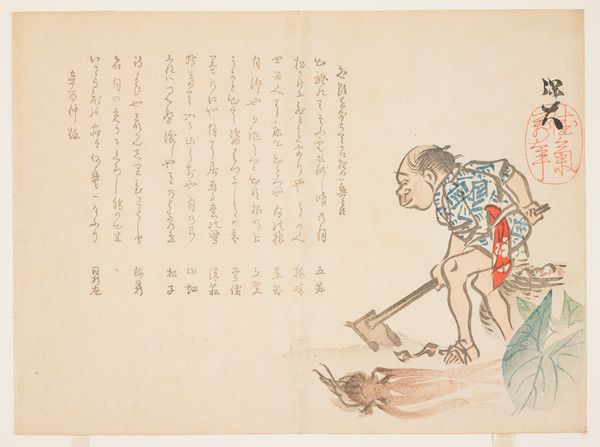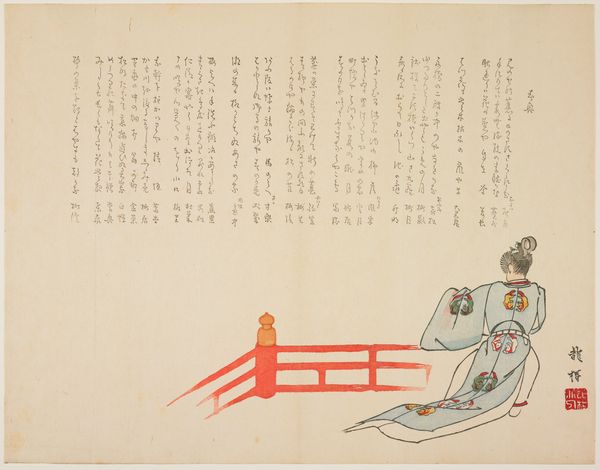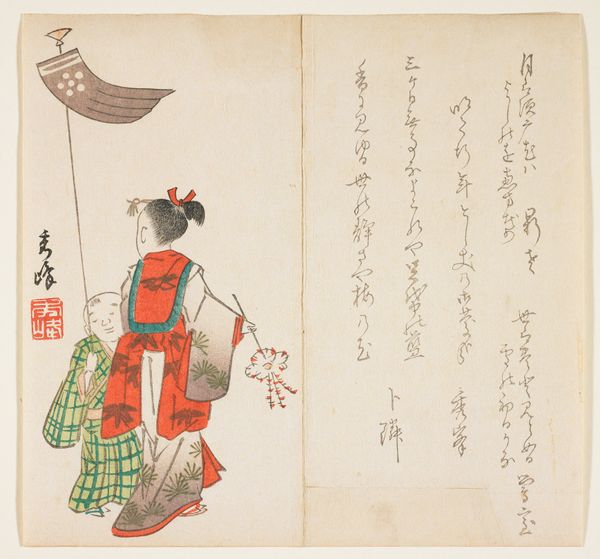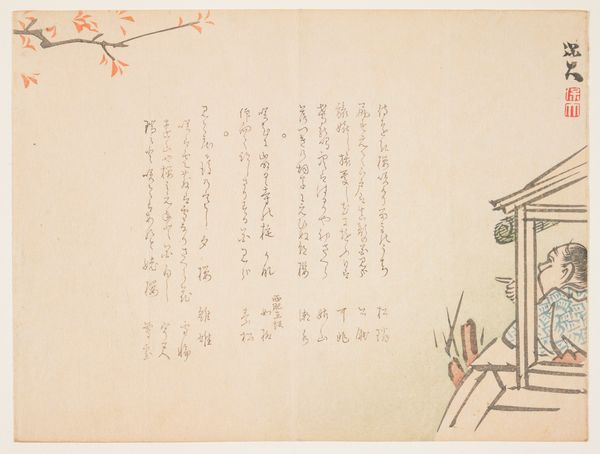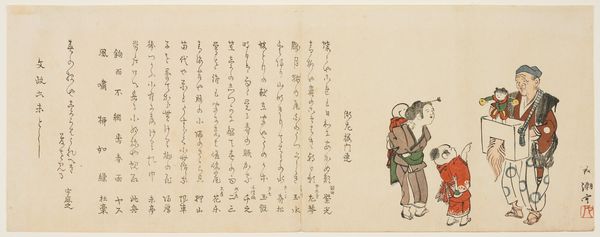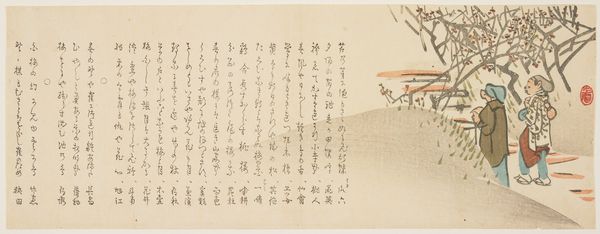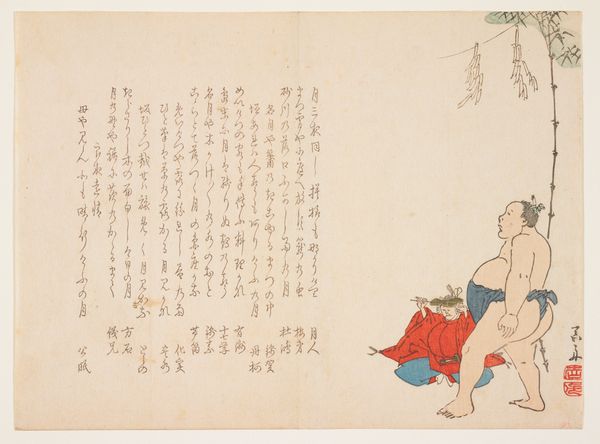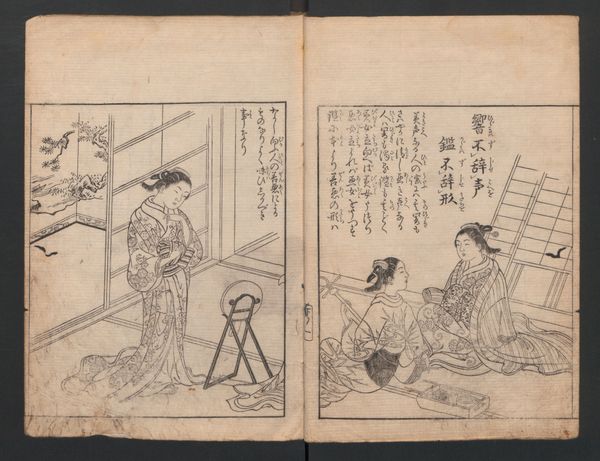
drawing, print, paper, ink, woodblock-print
#
drawing
#
narrative-art
# print
#
ukiyo-e
#
japan
#
figuration
#
paper
#
personal sketchbook
#
ink
#
woodblock-print
#
orientalism
#
genre-painting
#
watercolor
Dimensions: 7 3/16 x 9 3/4 in. (18.3 x 24.8 cm) (image, sheet)
Copyright: Public Domain
Curator: Here we have "Firewood Vendor," a work on paper, likely from 1864, attributed to Satō Hōdai and currently residing at the Minneapolis Institute of Art. Editor: The red outlines immediately strike me. They're so assertive, almost graphic, framing these everyday scenes and the text like cells in a comic strip. Curator: That visual approach to structure—the segmentation—is fascinating. Hōdai uses these rectangles to isolate narrative elements. Notice how they juxtapose the vendor with hanging kindling or firewood? It's not a unified perspective but a fragmented, almost cinematic composition. Editor: And look at the figure himself, weighed down by his load. You get a real sense of the physicality of labor. The Ukiyo-e tradition often idealized subjects, but here, there’s an unvarnished glimpse into the life of a commoner. Curator: Exactly. The lines, though simple, convey the burden through the stoop of his posture. It speaks to the social commentary inherent in genre paintings; these aren’t idealized figures but people engaged in daily struggles. Editor: The text adds another layer. While I can't read it, the density suggests correspondence or field notes – perhaps detailing the scene itself. It makes the piece feel immediate, like a captured moment in time. Was the artist making some commentary, or simply capturing it, and if capturing it, toward what end? Curator: Considering this likely functioned as a sketchbook page, such a piece might represent raw material for larger works or even personal records rather than necessarily existing as overt social commentary. Its value rests in formal arrangements; it does show line and compositional techniques and relationships between form and expression and that it presents those as one of its artistic features. Editor: Even knowing that shifts my understanding. Now I read those framed sections as notes or sketches around a central observation. So a moment made precious simply by the artist deciding to notice it at all. Curator: Precisely. "Firewood Vendor" becomes an exercise in artistic mindfulness—observing, recording, and then presenting form that can speak volumes by how effectively it works on paper as its own end. Editor: It certainly encourages us to look beyond the aesthetic beauty of traditional Japanese prints and see the life recorded within them. Thank you.
Comments
No comments
Be the first to comment and join the conversation on the ultimate creative platform.
